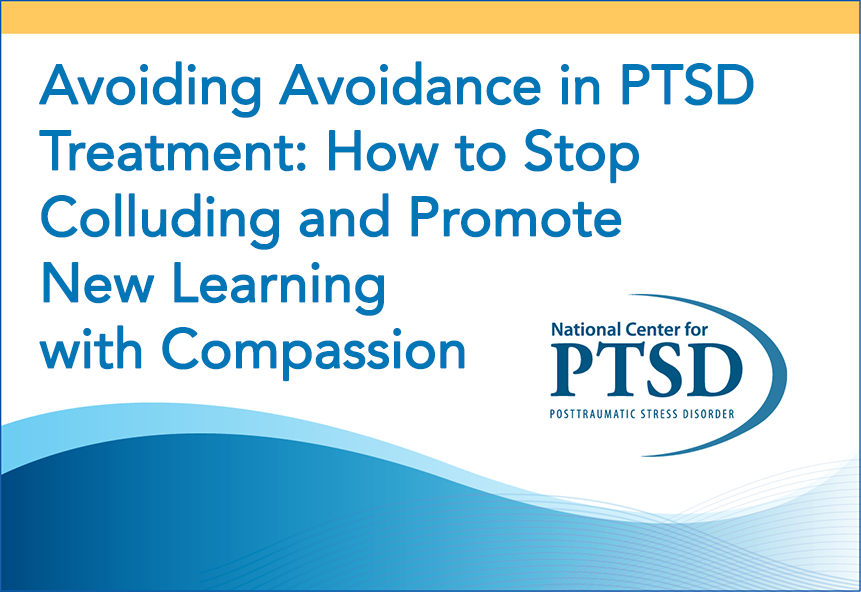PTSD: National Center for PTSD
Avoiding Avoidance in PTSD Treatment: How to Stop Colluding and Promote New Learning with Compassion
Continuing Education
This section brings together free in-depth Continuing Education resources for the Professional community concerned with trauma.
Avoiding Avoidance in PTSD Treatment: How to Stop Colluding and Promote New Learning with Compassion
- Date Created: 07/03/2025
- Time to Complete: 1 hour
- Credits: ANCC, APA, ASWB, ACCME, NBCC, Other Orgs
- Skill Level: Intermediate
- Course Series: PTSD 101, PTSD Consultation Lecture Series
 Author(s):
Author(s):
Description
Avoidance plays a critical role in posttraumatic stress disorder (PTSD), highlighting the importance of addressing this maintenance mechanism within psychotherapy. Additionally, it may be plausible that problematic avoidance is not only evident at the patient level but can also occur within systems, interpersonal relationships, and therapeutic contexts.
This online course provides an overview of PTSD symptom clusters, with particular emphasis on the centrality of avoidance behaviors and the Prolonged Exposure (PE) perspective, which views avoidance as an impediment to new adaptive learning and recovery. The author describes how avoidance can manifest in both passive and active forms, using examples, and explores how complicity with avoidance can hinder recovery and perpetuate avoidance patterns, even among well-intentioned therapists.
Goals and Objectives
- Describe the role of avoidance in the maintenance of PTSD
- Differentiate between patient-level avoidance and therapy-level avoidance
- Identify compassionate strategies to address collusion with avoidance in PTSD treatment
- Describe the role of avoidance in the maintenance of PTSD
- Differentiate between patient-level avoidance and therapy-level avoidance
- Identify compassionate strategies to address collusion with avoidance in PTSD treatment


























